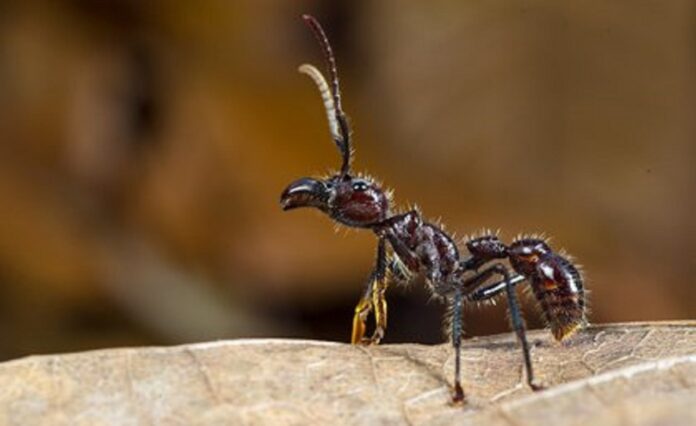Many ant species produce venom and may deliver a painful sting. However, due to their small size and the common misconception that all ants produce simple acid-containing venoms, the chemistry, and pharmacology of ant stings have yet to be primarily discovered. Most other ant species’ venoms are now recognized to be mainly constituted of peptides.
Researchers at the University of Queensland discovered that some of the world’s most severe ant stings, like snake and scorpion venom, target nerves.
The ant neurotoxins were identified by Dr. Sam Robinson and colleagues at UQ’s Institute for Molecular Bioscience while investigating the Australian green ant and the South American bullet ant, both of which produce painful stings.
Dr. Robinson said, “We have shown that these ant venoms target our nerve cells that send pain signals.”
Normally, sodium channels in these sensory neurons open for a brief period of time in response to a stimulus. Bullet ant stings can be painful for up to 12 hours, with sweating and goosebumps, unlike the 10-minute impact of a typical bee sting.
He said, “We don’t have bullet ants in Australia, but our green ant – or greenhead ant – can also cause long-lasting pain, and many Australians will have experienced this.”
The sodium channels in these sensory neurons are bound by the ant poisons, which makes them easier to open and keep open and active. This produces a persistent pain signal.
The late Dr. Justin Schmidt, an American entomologist who developed a pain index of stinging insects, examined the bullet ant as having the most severe insect sting in the entire globe.
Researcher said. “We want to understand pain at a molecular level, and toxins are fantastic tools to do this.”
He said, “These neurotoxins which target sodium channels are unique to ants. No one has found anything that looks or acts the same way, so now we have a new set of tools to work with.”
During the time of the dinosaurs, ants evolved their protective neurotoxins to ward off predators. Since then, they have evolved into one of Earth’s most successful animal species.
The result shows that peptide toxins affecting mammalian voltage-gated sodium channels are primarily responsible for the severe and persistent pain caused by T. africanum stings.
Journal Reference:
- Robinson, S. D., Deuis, J. R., Touchard, A.,etal. Ant venoms contain vertebrate-selective pain-causing sodium channel toxins. Nature Communications. DOI: 10.1038/s41467-023-38839-1
